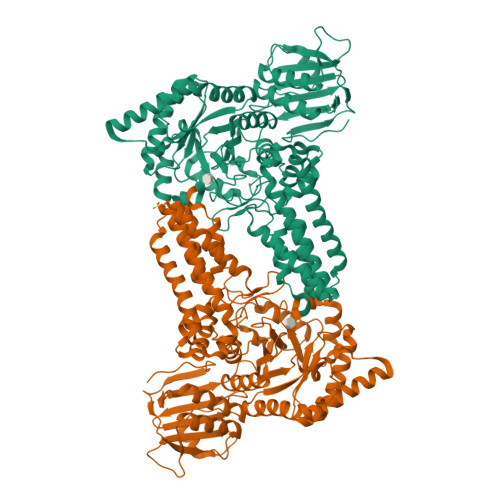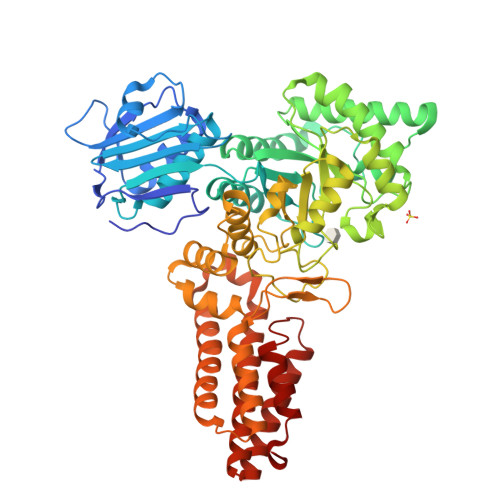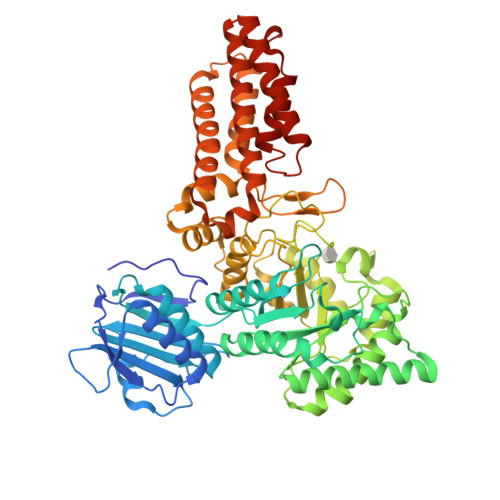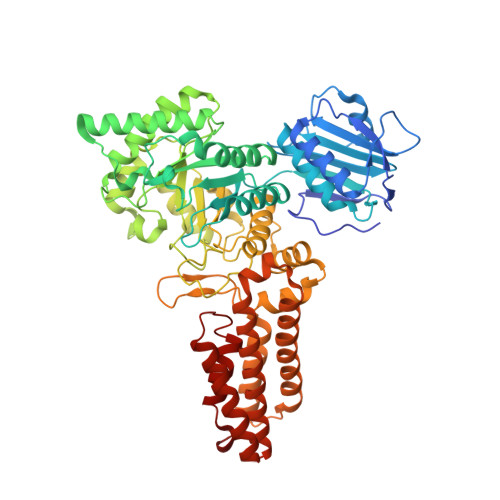Chemical Dissection of the Link between Streptozotocin, O-Glcnac, and Pancreatic Cell Death.
Pathak, S., Dorfmueller, H.C., Borodkin, V.S., Van Aalten, D.M.F.(2008) Chem Biol 15: 799
- PubMed: 18721751
- DOI: https://doi.org/10.1016/j.chembiol.2008.06.010
- Primary Citation of Related Structures:
2VUR - PubMed Abstract:
Streptozotocin is a natural product that selectively kills insulin-secreting beta cells, and is widely used to generate mouse models of diabetes or treat pancreatic tumors. Several studies suggest that streptozotocin toxicity stems from its N-nitrosourea moiety releasing nitric oxide and possessing DNA alkylating activity. However, it has also been proposed that streptozotocin induces apoptosis by inhibiting O-GlcNAcase, an enzyme that, together with O-GlcNAc transferase, is important for dynamic intracellular protein O-glycosylation. We have used galacto-streptozotocin to chemically dissect the link between O-GlcNAcase inhibition and apoptosis. Using X-ray crystallography, enzymology, and cell biological studies on an insulinoma cell line, we show that, whereas streptozotocin competitively inhibits O-GlcNAcase and induces apoptosis, its galacto-configured derivative no longer inhibits O-GlcNAcase, yet still induces apoptosis. This supports a general chemical poison mode of action for streptozotocin, suggesting the need for using more specific inhibitors to study protein O-GlcNAcylation.
Organizational Affiliation:
Division of Biological Chemistry and Drug Discovery, College of Life Sciences, University of Dundee, Dundee, Scotland.





















